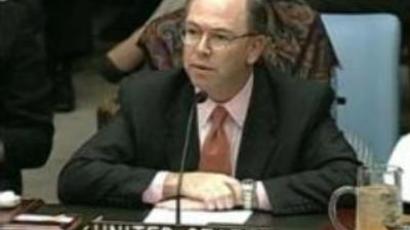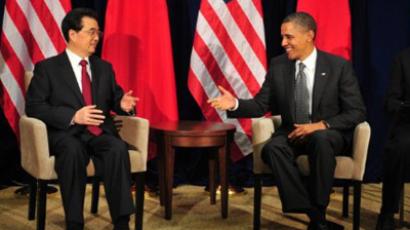Clinton in Myanmar: All about China?
The US Secretary of State is on the first official visit to Myanmar in 50 years, seen as an effort to push for democratic reforms. But experts believe the true aim of the trip is to pressure China and weaken its influence in the Asia-Pacific region.
The visit follows a decision by President Barack Obama in late November to open the door to the politically-isolated country, following recent progress in terms of political and economic reforms by the ruling military.Pavin Chachavalpongpun from the Institute of Southeast Asian Studies in Singapore believes the timing of the visit could not have been better taking into account a number of concessions by Myanmar’s new government. “If we look back – during the past five to eight months Myanmar has done drastic change domestically, especially in terms of pushing for more reforms,” he told RT. “We saw the elections last year in November , after that we also saw the release of Aung San Suu Kyi, the leader of the opposition from the NLD [National League for Democracy]. For the past few months we have seen the release of political prisoners and even a decision to suspend a project with China on a dam. These are key developments in Myanmar, so this is why I think it is a very crucial timing, especially when Myanmar has been awarded the chairmanship of ASEAN, [Association of Southeast Asia Nations] which will be in 2014. It could not be a better time.”Myanmar, known as Burma until 1989, is under US and international sanctions, a situation which gave its neighbor China an opportunity to extend its influence. The country is now experiencing an unusual diplomatic revival.
Washington has sought to isolate Burma since the State Law and Order Restoration Council (SLORC) came to power in 1988. In 1990 the US withdrew its ambassador from the country, following the annulment of election results. Oppositional National League for Democracy, led by Aung San Suu Kyi won in 1990 general elections, but the SLORC refused to step down. Aung San Suu Kyi was under house arrest for almost 15 years until her recent release in November 2010.
On Monday, Chinese Vice President Xi Jinping proposed that China and Myanmar bolster military cooperation during a meeting with Myanmar's Commander of the Armed Forces. Min Aung Hlaing visited China with a two-day visit earlier this week, just before the trip by the US Secretary of State Commenting on the US diplomatic efforts, Pavin Chachavalpongpun says the true aim of Hillary Clinton’s visit to Naypyidaw is to trim down Beijing’s growing dominance in the region.“If we look into a larger geopolitical context, this is about competition with the rise of China in this part of the world, especially in Myanmar,” he told RT. “At least this has shown the Chinese that what we have seen in Myanmar – being an isolated country heavily relying on China alone – is no longer true. I think Myanmar has reached out to other powers from outside the region, as much as in the region, for example, to India, to ASEAN and other organizations. And now towards the US. I think, from Myanmar perspective, this is kind of diversifying its own foreign policy options. So I think China will have to bear this in mind. This is in the interest of the US government to have to come and to have to maintain its strategy alliance with a country in this region.”
The only other US secretary of state to visit Myanmar was John Foster Dulles – in 1955 to the then-Burma. Two years earlier, in 1953 US Vice President Richard Nixon made a two-day visit to Burma. The US then tried to bring Burma into South Asia Treaty Organization – a planned Southeast Asian version of NATO. The US-backed organization aimed to block communism spread in Southeast Asia, but it did not last long and was dissolved in 1977 after multiple members lost interest and withdrewNixon was greeted by demonstrators carrying anti-US signs with such slogans as: “Burma not a place for Yankee warmongers” and “Uncle Sam out!”
Dr. Pak-nung Wong from the Chinese University of Hong Kong explained to RT why China regards Clinton’s visit as a possible threat to its strategic interests in the region."This threat is posed from two angles,” he said. “Number one: China has been contributing more than 70 per cent of foreign direct investment to Myanmar. And if the US is able to open up Myanmar and bring in more Western capital that means Myanmar would have more opportunities and more bothering power to try to level the dominance and the influence of Chinese investors and the capitals as a result. So the Chinese government is seeing this visit as an opening of more unpredictability in the Myanmar market”.“Number two,” he went on, “it is bringing more uncertainly regarding the regional security. China has been importing more than 80 per cent of oil through the Malacca Strait which is a choke point between Indonesia and Singapore. China has been working closely with Myanmar to build a pipeline from coastal port of Kyaukryu directly to Chinese city of Kunming. And that project has been very smooth in the past. However, the visit of Clinton and opening up Myanmar to the Western countries may pose certain insecurity and uncertainty to this particular project.”














